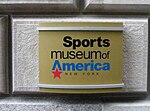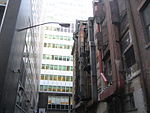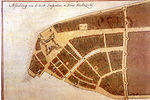New York Produce Exchange

The New York Produce Exchange was a commodities exchange headquartered in the Financial District of Lower Manhattan in New York City. It served a network of produce and commodities dealers across the United States. Founded in 1861 as the New York Commercial Association, it was originally headquartered at Whitehall Street in a building owned by the New York Produce Exchange Company. The Association was renamed the New York Produce Exchange in 1868 and took over the original building in 1872. Between 1881 and 1884, the Produce Exchange built a new headquarters on 2 Broadway, facing Bowling Green in Lower Manhattan. The structure, designed by George B. Post, was the first in the world to combine wrought iron and masonry in its structural construction. The main feature of the structure was an exchange floor that measured approximately 220 by 144 feet (67 by 44 m). The Produce Exchange was profitable following the building's completion. By the 1880s, it had the largest membership of any exchange in the United States, with a maximum of three thousand members. By 1900, the exchange was doing $15 million a day in business. In the early 20th century, activity on the Produce Exchange started to decline due to competition from other cities. The Produce Exchange sold off its building for development in the 1950s; the headquarters was demolished to make way for a skyscraper called 2 Broadway. The exchange had its trading floor in the skyscraper from 1959 until 1973, when it was restructured as the Produce Exchange Realty Trust, a real estate investment trust.
Excerpt from the Wikipedia article New York Produce Exchange (License: CC BY-SA 3.0, Authors, Images).New York Produce Exchange
Broadway, New York Manhattan
Geographical coordinates (GPS) Address Nearby Places Show on map
Geographical coordinates (GPS)
| Latitude | Longitude |
|---|---|
| N 40.704722222222 ° | E -74.013055555556 ° |
Address
2 Broadway
Broadway 2
10275 New York, Manhattan
New York, United States
Open on Google Maps










